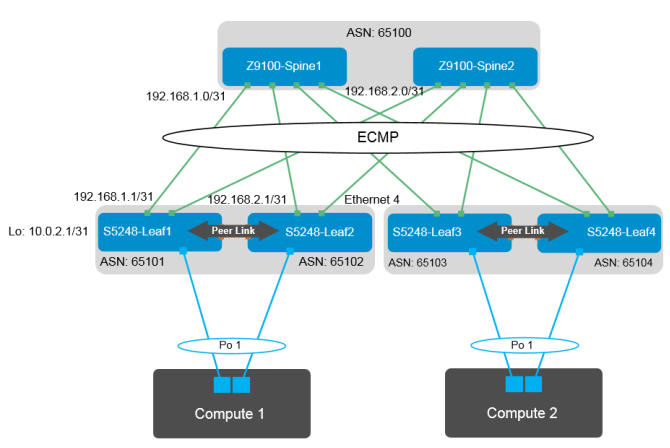Home > Networking Solutions > Enterprise/Data Center Networking Solutions > Enterprise SONiC Networking Solutions > Guides > Enterprise SONiC Distribution by Dell Technologies - Lifecycle Management > Free Range Routing
Free Range Routing
-
Another method to configure routing uses the Free Range Routing (FRR) shell.
Note: Free Range Routing is also referred to as FRR and FRRouting.
FRR provides the configuration and management of Layer 3 protocols. FRR can be used to configure routing protocols such as BGP and RIP. FRR operates as a suite of daemons that work together with the protocols that are implemented as separate services. Some of the advantages of using FRR include:
Some of the protocols that FRR supports include:
FRR also supports various use cases that require routing and routing protocols.
Note: For detailed information about FRR and supported platforms, see http://docs.frrouting.org/en/latest/overview.html.
By default, the FRR stack is installed in the SONiC NOS and is available when the switch boots. The FRR CLI is accessible from the Linux shell.
SONiC routing protocols are configured in the FRR shell. To enter the FRR shell from SONiC, enter the vtysh command.

The following is a sample eBGP configuration that uses the FRR shell on Leaf1, as shown in the previous figure.
router bgp 65101
bgp router-id 10.0.2.1
bgp graceful-restart
bgp bestpath as-path multipath-relax
neighbor SPINE peer-group
neighbor SPINE timers 3 9
neighbor SPINE advertisement-interval 5
neighbor 192.168.1.0 peer-group SPINE
neighbor 192.168.1.0 remote-as 65100
neighbor 192.168.2.0 peer-group SPINE
neighbor 192.168.2.0 remote-as 65100
address-family ipv4 unicast
redistribute connected route-map spine-leaf
exit-address-family
